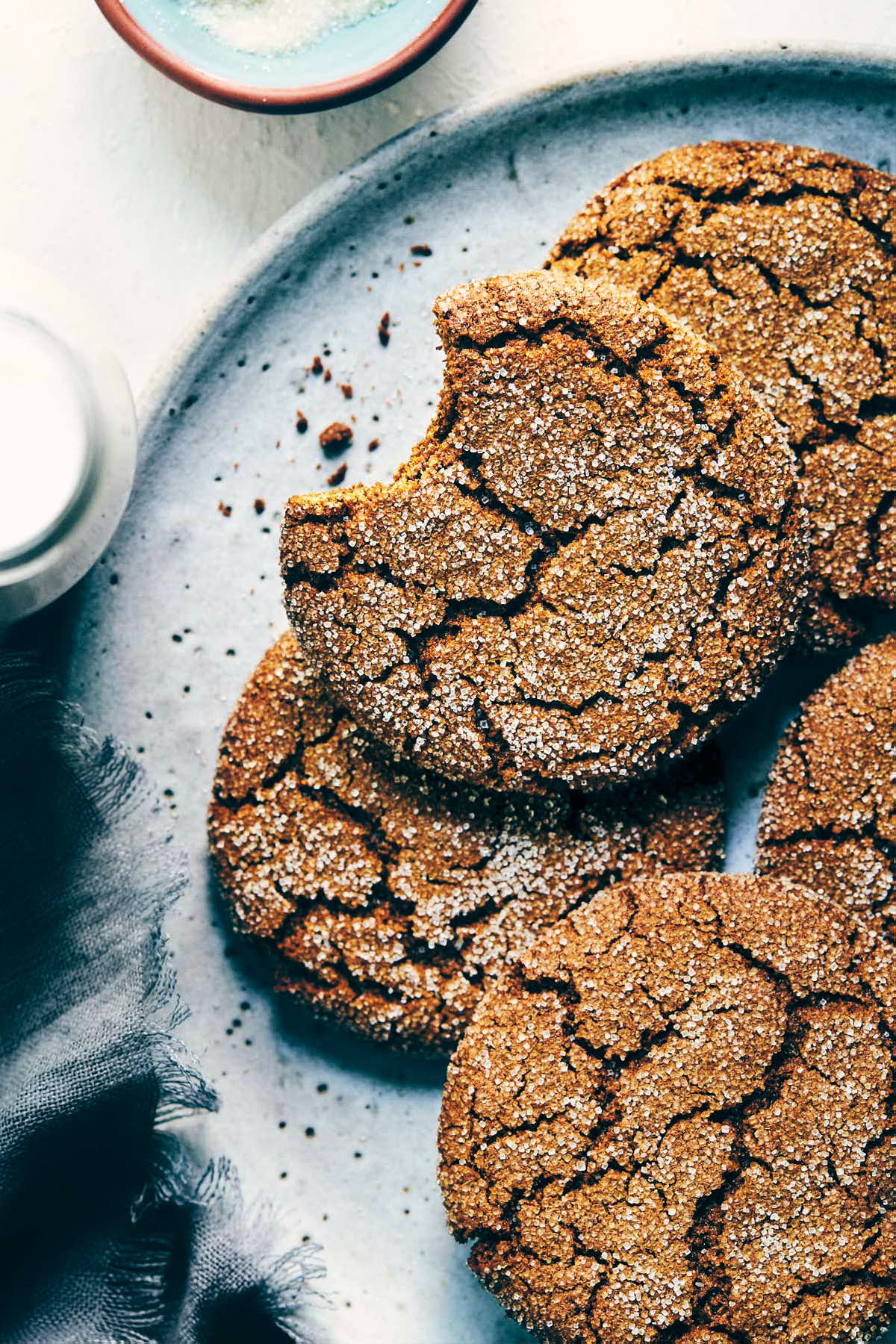
Ginger molasses cookies are my favorite kind of cookie (second only to the classic chocolate chunk!). When my boyfriend and I started dating, he noticed my love of ginger cookies and started to collect them from local coffee shops. After work, he'd pull out the crumpled cookie bag from his work jacket for "us" to taste test. Usually, that meant me eating most of the cookie before noticing he was patiently waiting to try some too. Oops! (Update: We're married now!—and if he buys treats, he'll get two just to be safe.)
Ironically, after all that testing, the ginger molasses cookie we love best are these homemade ones. I tweaked a family-favorite recipe to make it vegan. The whole-grains don't only make these cookies more wholesome, but they also provide a slightly more complex flavor than all-purpose flour. The pretty sugar-coated exterior is optional, but make for a picture-perfect cookie, don't you think?! Enjoy these cookies with a hot cup of tea or coffee—or eat them on it's own, because the perfect ginger molasses cookie truly needs nothing else.

Key ingredients
- Ground flax and water: Whisked together to make a vegan "flax" egg for baking.
- Whole wheat pastry flour: This flour is finely milled and has a low protein content, which helps keep baked goods light (which can be a challenge with whole-grains).
- Spelt flour: Another whole-grain flour that adds a subtle nuttiness.
- Spices: Cinnamon, cloves, ginger, and nutmeg.
- Coconut oil: Melted coconut oil is a vegan-friendly butter substitute. The other flavors in these cookies make it so that there's no noticeable coconut flavor, but if you can use refined (deodorized) coconut oil to be extra safe. Grapeseed oil or other vegetable oil works too.
- Molasses: I usually use dark molasses for these cookies. But "fancy" molasses works too (see the FAQ below). Pro tip—measure out the molasses after the coconut oil. That way, the residual oil in the measuring cup will help the molasses slide out easily!
- Cane sugar: For sweetness, both inside the cookie and for rolling. You can use cane sugar or granulated sugar, whichever you prefer.
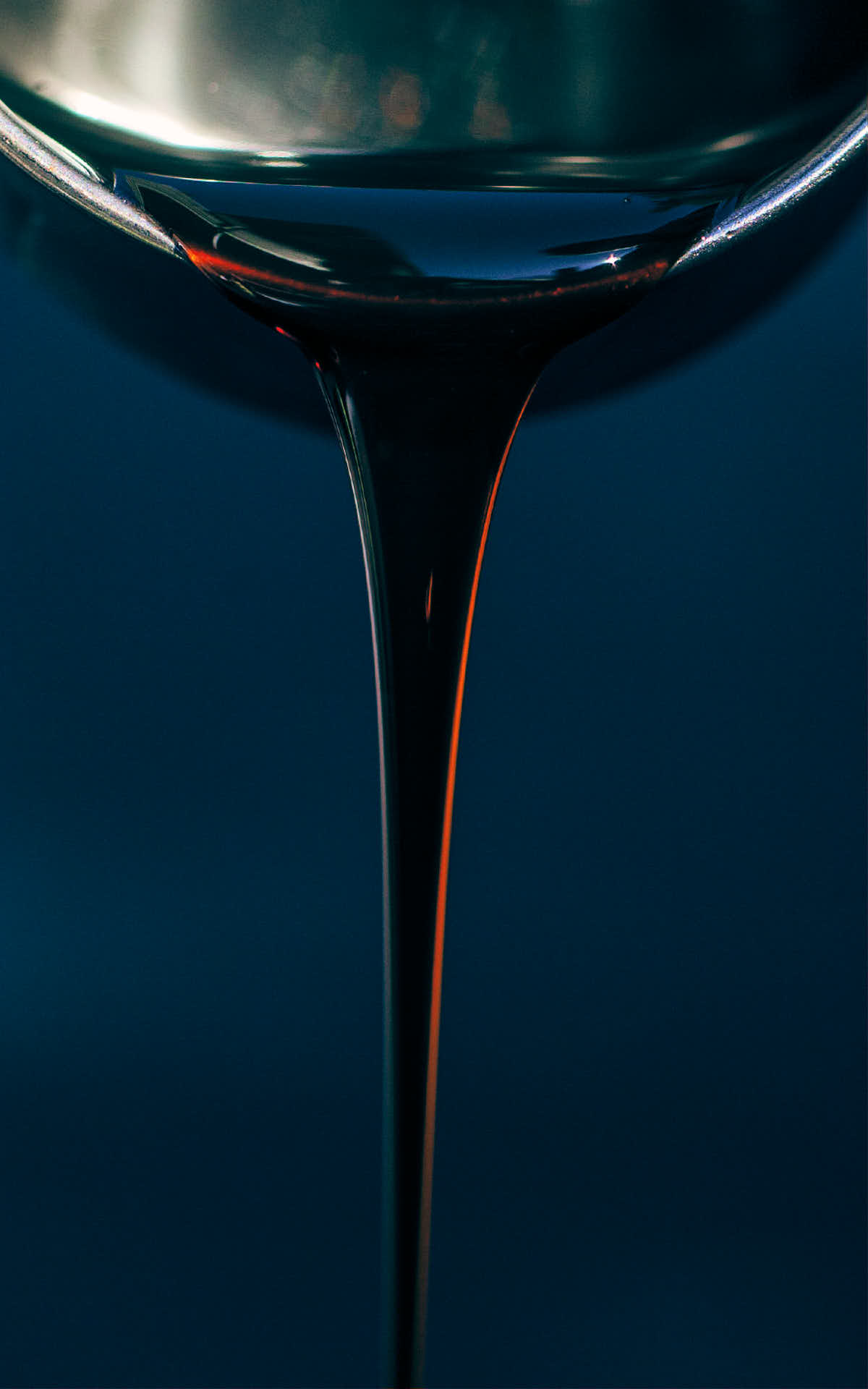

How to make
These vegan cookies follow a similar baking process as regular cookies. Ginger cookie dough is often quite firm/stiff when you're incorporating the final dry ingredients. Use either a handheld mixer or a stand mixer, and mix until the dough comes together—because it will!
- Make the flax egg: Whisk the flax and water together until smooth. Set it aside to let it thicken.
- Mix dry ingredients: Whisk together the flours, spices, baking soda, and salt.
- Mix wet ingredients: Use an electric mixer to combine the oil, molasses, flax egg, and sugar.
- Combine: Add the dry ingredients to the wet ingredients, in batches, starting on low speed (so the flour doesn't fly out of the bowl). The dough will appear quite still and dry at first—keep going until it comes together.
- Bake: Scoop the dough into balls (we recommend using a 3 tablespoon cookie scoop), then roll the balls in extra sugar. Arrange the balls on a baking sheet (see the FAQ below), and gently flatten the tops before baking. Bake until the edges are set and the middles are soft. Enjoy!
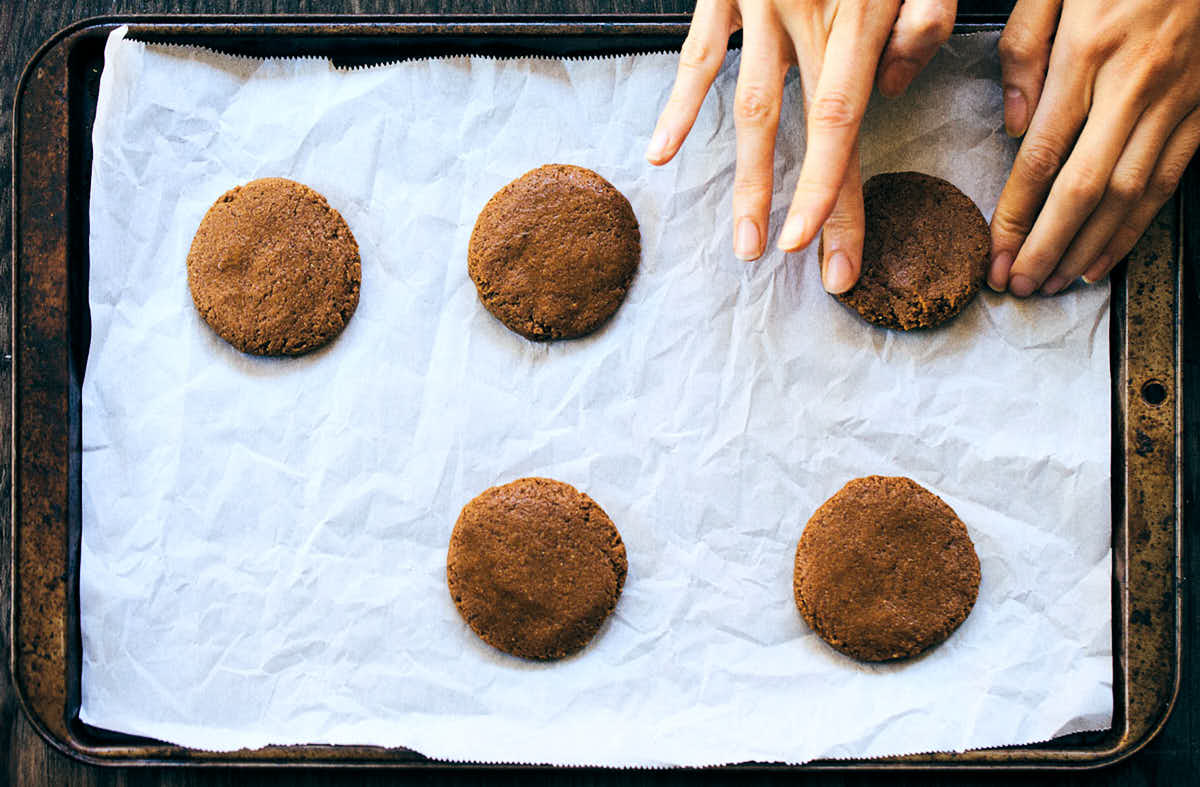

Frequently asked questions
Yes, you can use all-purpose flour instead of whole wheat pastry flour. For best results, substitute by weight (grams are provided in the recipe card, under "metric").
Yes, you can use more whole wheat pastry flour instead of spelt. For best results, substitute by weight (grams are provided in the recipe card, under "metric").
Molasses is the byproduct of processing sugar cane (or sugar beets). The juice from the sugar cane gets heated in stages to remove the additional sucrose, which then gets turned around and sold as table sugar. Each stage of heating removes more and more sugar (and becomes more concentrated).
Fancy Molasses has gone through one stage of heating and contains the most sucrose (sugar). Dark Molasses has gone through two stages of heating. Blackstrap Molasses has gone through three stages of heating, so it contains the least sucrose (sugar) and the most concentrated in mineral content but also the least sweet.
For these cookies we recommend using either Fancy or Dark Molasses, which will provide the flavor and moisture from the molasses without bitterness.
Dry dough could be from using too much flour. For best results in baking, measure your ingredients by weight (on a scale) rather than volume (cups, spoons). If you don't have a scale, fluff up the flour in the bag, lightly spoon it into the cup, and level off the flour using the back of a spoon.
If you added the right amount of flour and the dough still looks dry, it likely just isn't mixed enough. Use an electric mixer (either handheld or a stand mixer) and keep mixing on low speed until the dough comes together.
You don't have to! But the sugar makes them extra pretty, and adds a bit of sweetness and texture to the outside.
We usually recommend baking cookies on a light baking sheet. We like these ginger molasses cookies to be soft and chewy, so they're sensitive to bake time. Don't over bake because the cookies will firm up slightly as they cool. Darker pans will cook faster, so if you use them, check the cookies a couple minutes earlier than the recipe says.
Allow the cookies to fully cool, then transfer them to a sealed container. Store at room temperature for up to 3 days.

📖 Recipe
Vegan Ginger Molasses Cookies
Ingredients
- 1 tablespoon ground flax
- 3 tablespoons water
- 1¼ cup whole wheat pastry flour
- 1 cup spelt flour
- 2¼ teaspoons cinnamon
- 1½ teaspoons ground cloves
- ¾ teaspoon ground ginger
- ¾ teaspoon nutmeg (see note 1)
- 1 teaspoon baking soda
- ¼ teaspoon fine sea salt
- ¼ cup melted coconut oil (or grapeseed oil)
- ⅓ cup molasses (unsulfured)
- ⅔ cup cane sugar (or granulated sugar, more for rolling)
Instructions
- Preheat: Put a rack in the middle of the oven and preheat to 350°F (177°F).
- Flax egg: Whisk together flax and water. Set aside for 10 minutes to thicken.
- Dry ingredients: Meanwhile, in a medium bowl, whisk together whole wheat pastry flour, spelt flour, cinnamon, cloves, ginger, nutmeg, baking soda and salt.
- Wet ingredients: To a large bowl, add melted oil and molasses to a large bowl. Mix with an electric mixer, on high speed, until fully combined, 1 to 2 minutes. Add "flax egg" and sugar. Mix on low speed until fully combined.
- Combine: Add half of the dry mixture to wet mixture and mix on medium speed for 1 minute. Add the remaining half of dry ingredients and mix on low speed until there's no visible flour. The dough will appear quite stiff and dry at first, but keep going because it will come together with enough mixing!
- Bake: Scoop dough into golf-ball sized balls (about 3 tablespoons each). Roll each ball between your hands until smooth, then roll in extra cane sugar to coat. Arrange dough on parchment lined baking sheets (about 6 to 8 per sheet, leaving space for spreading). Use the palm of your hand to gently flatten each ball. Bake one sheet at a time, until the edges are set but the middle is still slightly soft, about 10 minutes. Transfer the cookies to a cooling rack and bake remaining dough.
Notes
- Nutmeg: Freshly grated nutmeg is a lot more flavorful, so use it if you can (but pre-ground nutmeg works too).
- Baking by weight: For the most reliable results, we recommend measuring by weight when baking. Ingredient weights are provided in metric. If you must go by volume (measuring cups), make sure to fluff, spoon, and level the flour to avoid adding too much.

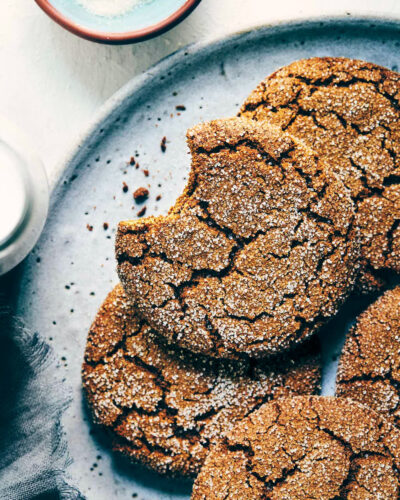
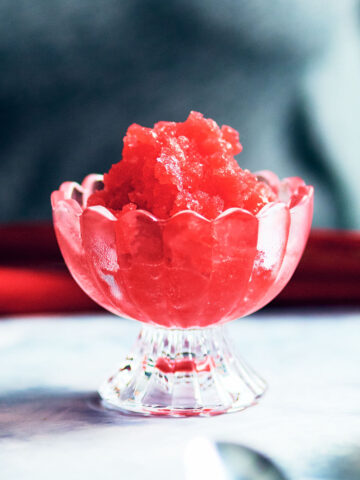
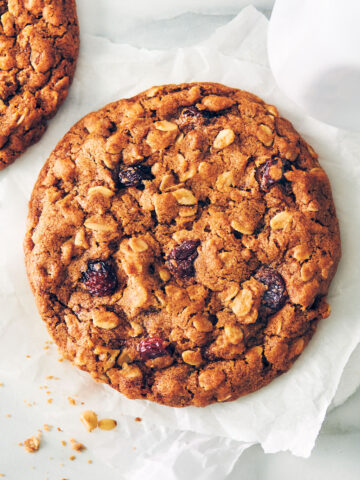
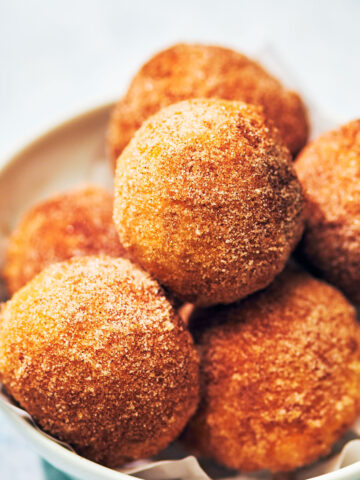
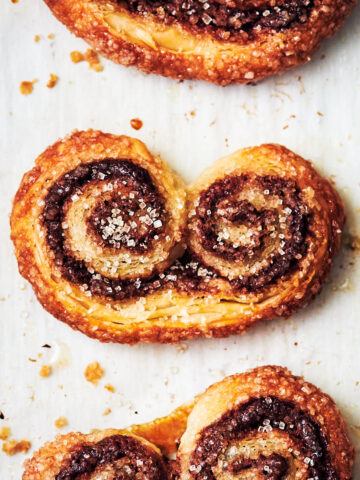
Carla says
So delish! I used regular granular sugar and they worked out great!
bri says
Yay, glad you enjoyed these cookies Carla! Happy holidays!
Summer says
Hey Bri 🙂
Would these cookies work out the same using eggs and gluten-free flour?
Bri says
Hi Summer! You can definitely substitute an egg instead of the flax egg. If you have "Extra Large" eggs, use one of those, otherwise opt for "Large". I haven't tested this recipe with gluten-free flour BUT there's a lot of gluten-free flour blends out there that are marketed as 1:1 substitutes for regular flour. If you have one of those that you find reliably works as a substitute in other recipes, then you should give it a try! Let me know how it goes!
Beth Erman says
Have you tried this with a gluten-free flour? I have celiac disease. I can't imagine there would be an issue, but thought I'd ask.
Brianne B. says
Hi Beth! I haven't yet tried it with gluten-free flour, but I definitely think you should! I would suggest a reliable gluten-free all-purpose substitute. I'm eager to hear how it goes - please let me know:)